Pros: Exceptional cargo space and versatility for a small EV; refined driving dynamics
Cons: Questionable value; mediocre electric range; regen braking needs some work
We really want to like the 2023 Mercedes-Benz EQB. It is basically the all-electric version of our favorite entry-level luxury SUV, the Mercedes GLB, which alone is enough to pique our interest. It certainly drives better as a result, replacing the GLB 250’s merely OK turbocharged four-cylinder gas engine for electric motors that are smoother, quieter and more torque-rich. It also won’t need to visit a gas station and its day-to-day carbon footprint will be smaller. Best of all, those added batteries don’t significantly affect the GLB’s impressive back seat and cargo space. You can still fit four adults and a shocking amount of their stuff aboard.
So, what’s the issue? It comes down to value. The base, single-motor EQB 250+ starts around $54,000, which is about $14,000 more than the base GLB 250. The more powerful, dual-motor EQB 350 can go well into the $60,000 range. Paying more for an EV is totally normal and a tough economic equation to figure out for every buyer, but this one in particular stands out since you’re paying so much for a subcompact SUV. At least various competitors offer a unique design or other elements of appeal beyond the electric powertrain.
And speaking of competitors, here’s where there’s more trouble for the EQB. A vehicle that’s remarkably similar in terms of base range, acceleration, charging speed and size is the Kia Niro EV Wave, except that car is substantially better equipped and about $10,000 less expensive. Sure, a Mercedes definitely should cost more than a Kia (for reasons beyond just the badge), but the price gap is too great given the equipment disparity, and is amplified further once you enter into the equation EVs that offer more range, better performance and faster charging for less money such as the Kia EV6, Hyundai Ioniq 5 and, to a lesser extent, Ford Mustang Mach-E. The Genesis GV60 also delivers far more EV for your money, while the Audi Q4 e-Tron stands out with its unique, higher-quality interior (versus being a carbon copy of another model) and more refined driving experience.
So, we really want to like the EQB, and suppose we really do in theory. But since buying cars isn’t theoretical, people actually looking to buy an EV will find smarter bets for their money.
Interior & Technology | Passenger & Cargo Space | Performance & Fuel Economy
What it's like to drive | Pricing & Trim Levels | Crash Ratings & Safety Features
What's new for 2023?
The EQB was all-new last year and sees the entry EQB 250+ added to the lineup for 2023. The GLB it’s based on, however, dates back to 2020.
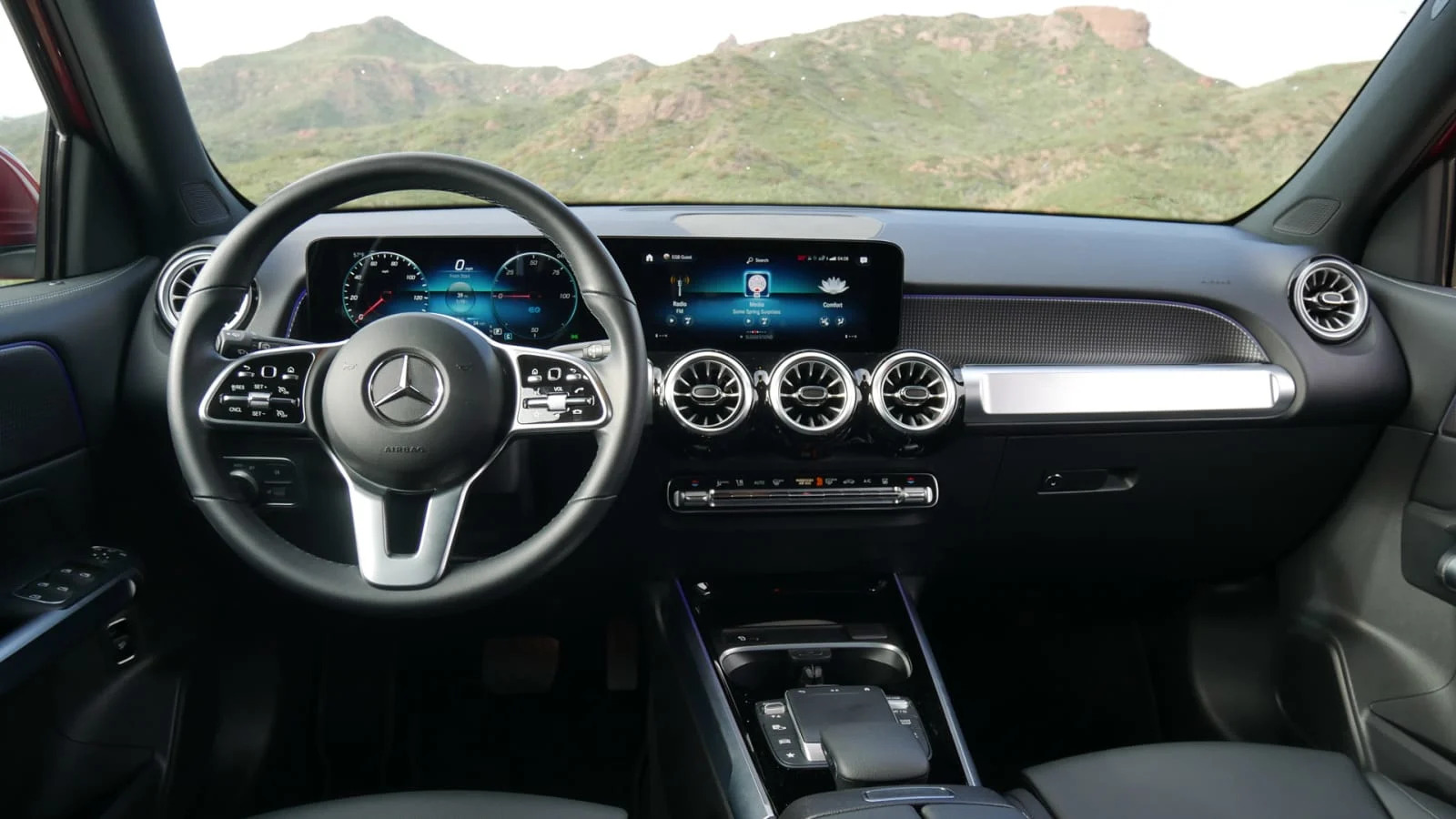
What are the EQB interior and in-car technology like?
It is basically identical to the Mercedes GLB. There are a few unique color/trim options, and the all-digital instrument panel features EV-specific designs, but most folks wouldn’t be able to tell them apart. On one hand, that’s just fine. We’ve praised the GLB’s interior design and packaging, and although some of its materials aren’t as rich as those of pricier Mercedes, they are still of high-enough quality for the price range. And there’s the issue with the EQB: it costs a lot more than the GLB, and the interior feels a bit cheap when you’re talking $60,000. For similar money, the Genesis GV60, Audi Q4 e-Tron, Lexus RZ and upper trim levels of the Nissan Ariya and Kia EV6 look and feel more luxurious.
At least the in-car tech is fully up to the luxury car task. The EQB features Mercedes’ MBUX tech interface that consists of a touchscreen, touch-sensitive control pad and natural voice recognition. There are also touch-sensitive steering wheel controls, but they’re more frustrating and confusing than actually helpful. Overall, the system is vibrant and modern in appearance, and packed with customization features. There is a steeper learning curve than many touchscreen-only systems, but we don’t consider it a deal breaker. We wish more menu icons appeared on the home screen than just three (newer MBUX systems with bigger screens correct this), and the EV-specific instrument designs are either too busy or just bizarre. Apple CarPlay and Android Auto are standard, but the onboard Mercedes navigation search and entertainment controls are so good, you may not need them.
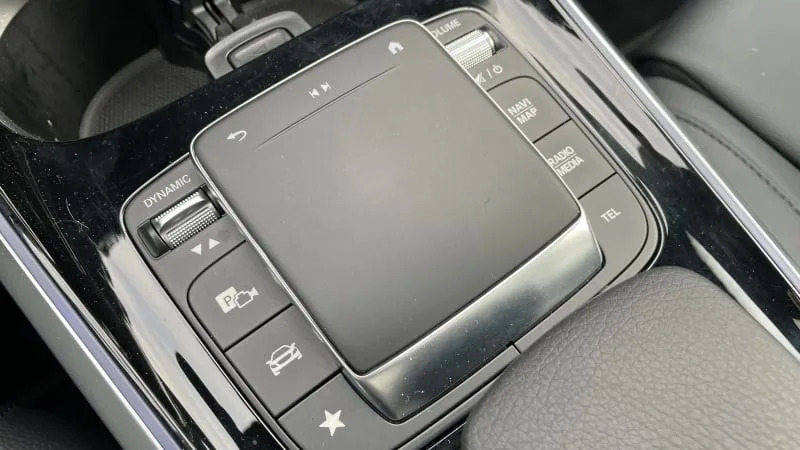
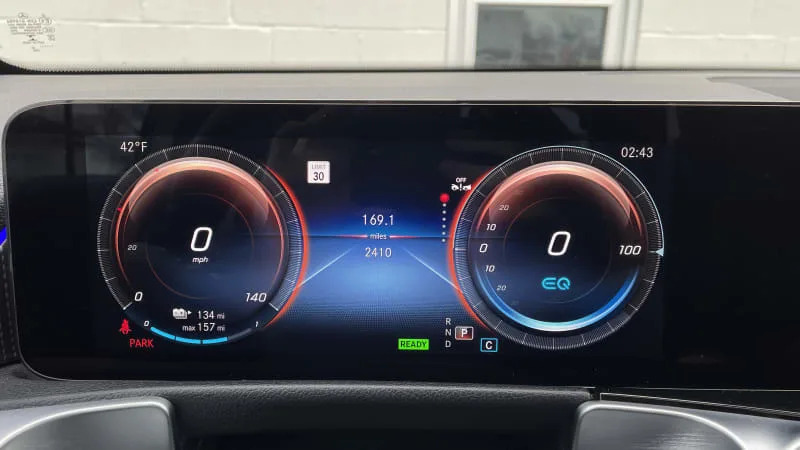
How big is the EQB?
Pun intended, this is the biggest reason to buy an EQB over other, similarly priced luxury EVs. Like the GLB, the boxy little EQB packs a ton of interior space into its exterior footprint. Now, that’s typical for EVs, and in fact, most competitors on dedicated EV platforms provide even more back seat space. In terms of versatility and functionality, however, the EQB has them beat since its 60/40-split back seat both reclines and slides fore-aft. No other EV in this price range does that.
Beyond that back seat, though, is where the EQB really impresses. It can’t fit quite as much stuff behind its sliding-and-reclining back seat as the GLB (the EV battery effectively eliminates the dual-level cargo floor and the extra space it provides), we still easily stuffed six suitcases and a large Coleman cooler aboard. Good luck doing that with its myriad EV rivals. It even has raised roof rails – a more functional and versatile design than flush rails, static mounting points or none whatsoever.
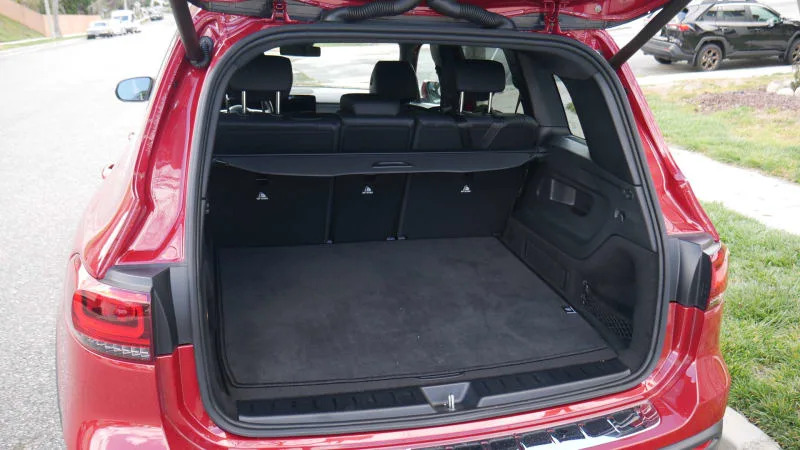
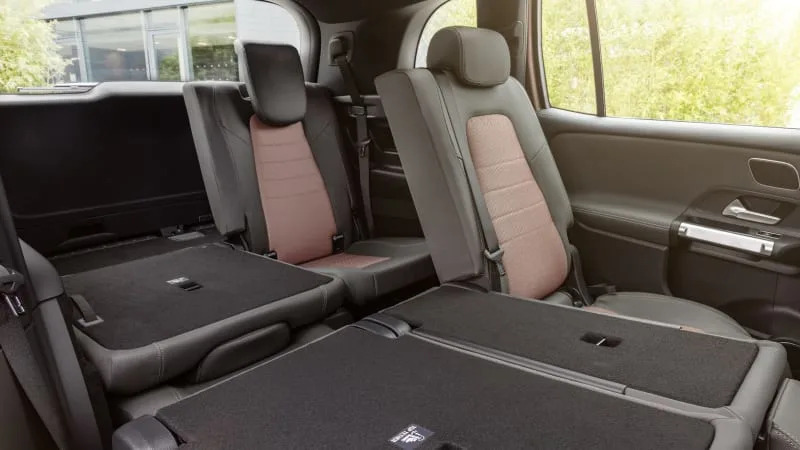
What are the EQB’s fuel economy and performance specs?
The EQB has two powertrain options that carry over from 2022, both all-electric and both providing all-wheel drive courtesy of a pair of electric motors. The base powertrain comes in the EQB 300, which offers 225 horsepower and 288 pound-feet of torque. That’s good enough for a respectable run to 60 in 7.0 seconds. Its 70.7-kilowatt-hour battery pack is rated to go 243 miles on a single charge.
For a little more urgency from the accelerator, the EQB 350 provides a total of 288 horsepower and 384 pound-feet of torque. That’ll hustle the vehicle to 60 mph in a flat 6 seconds. You sacrifice some range for that extra power, though, providing 227 miles of driving on a charge from that same battery pack.
Both versions of the EQB feature 400-volt electrical architecture, allowing them to charge at a peak 100 kW, replenishing the battery from 10% to 80% in 32 minutes at a DC fast charger. On a 240-volt Level 2 charger, they can go from 10% to 100% charge in your garage in 7 hours, 45 minutes.
Mercedes will launch a less-powerful, single-motor EQB 250+ for the 2023 model year. Mercedes says it will offer 188 horsepower and an expected driving range of 250 miles. Other details haven't been announced as of this writing.
Unlike the GLB, or the other Mercedes EQ vehicles, there’s no high-performance AMG version of the EQB available, unfortunately.
What's the EQB like to drive?
Relatively small, the GLB upon which the EQB is based lends itself well to electrification. Like almost all battery-powered cars, the EQB is zippy off the line and delivers smooth, linear acceleration in near silence. Despite not having the thrum and drone of a gas engine to cover up squeaks and rattles, the EQB’s calm ride and fine-tuned suspension makes cruising a smooth, quiet experience even on rough roads.
The EQB’s battery pack lends it a low center of gravity, which makes it handle more like the GLK we used to know and love than the bigger, artificially softer SUVs in the Mercedes lineup. It’s generally laid-back to drive, but put it in Sport mode (Comfort is the default) and find a curvy road, and it’ll respond nicely. There is also an Eco mode to save range, and an Individual mode to mix and match from the others. Paddles on the back of the steering wheel can increase or decrease regenerative braking, but the Auto mode behaves intelligently, keeping you from coasting too fast down a hill or too close behind another car. The EQB doesn’t give off a funny feeling from the brake pedal when the automatic regen is working, either, like the other EQ models do.
What other Mercedes-Benz EQB reviews can I read?
Mercedes-Benz EQB First Drive Review: Next electric Benz is a little different
This is our first drive of the EQB, wherein we find it benefits from being basically an all-electric version of the Mercedes GLB, maintaining its good qualities while improving through its favorable EV powertrain.
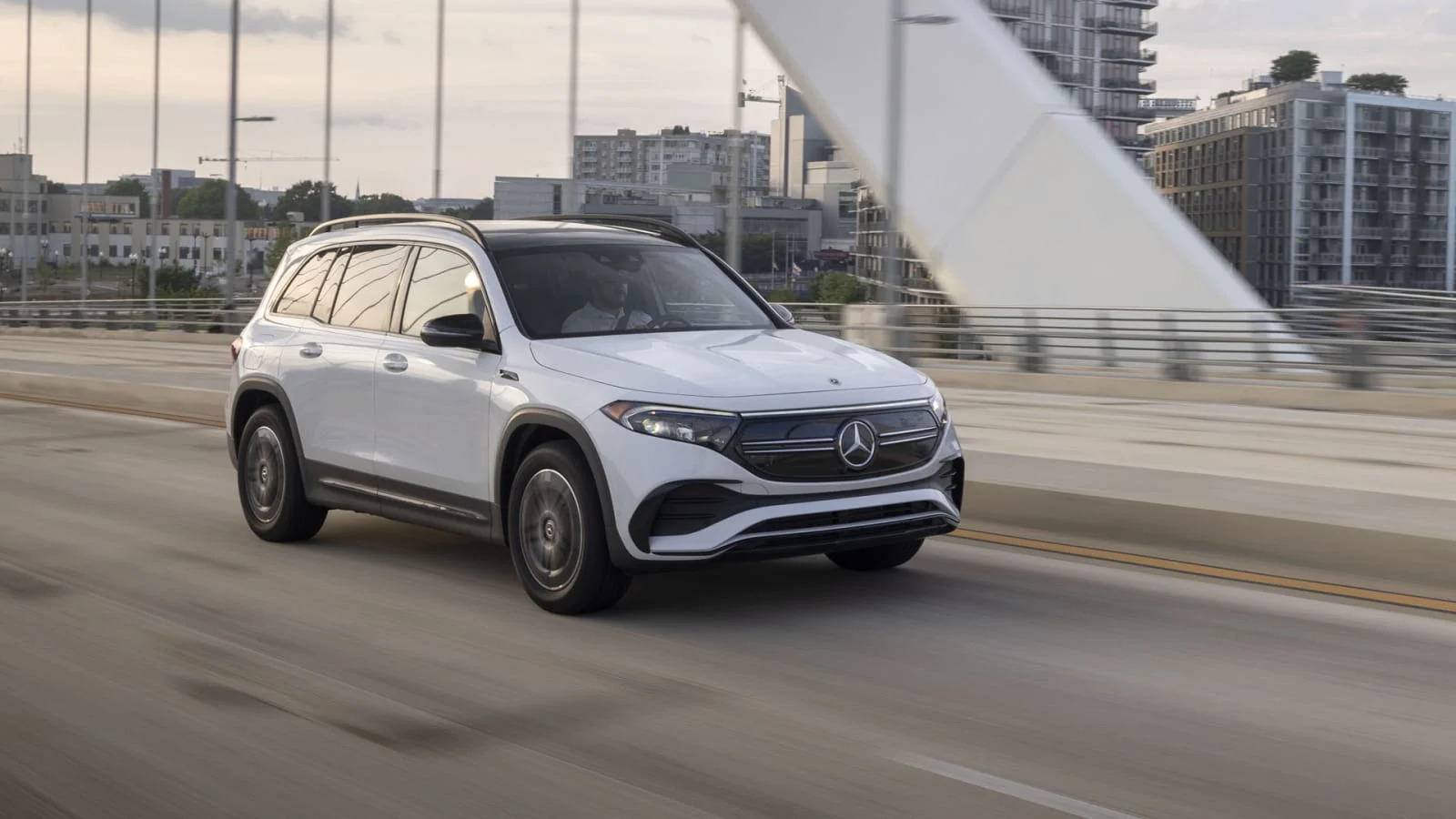
Mercedes-Benz EQB Luggage Test: How much cargo space?
Take a deep dive into the EQB cargo capacity and how much actual stuff you can fit behind the sliding and reclining back seat.
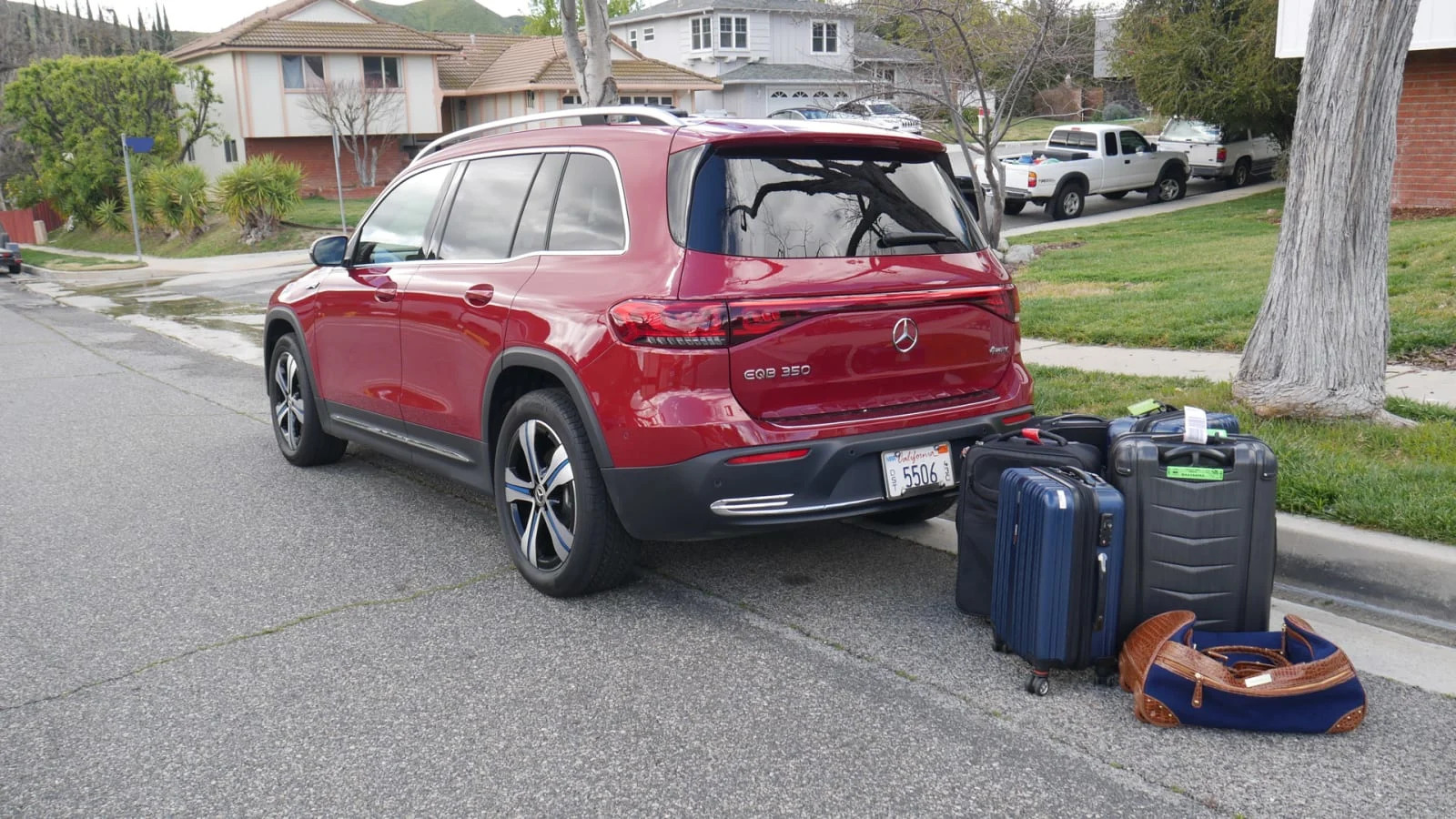
What is the 2023 EQB’s price?
As usual for a Mercedes, the different EQB models align with different powertrains. The higher the number, the more power you'll get. Equipment is comparable between those models, each of which get Premium, Exclusive and Pinnacle trims. Standard features on the Premium include power front seats with memory, the dual screen display, navigation with range-saving intelligence, 64-color ambient lighting, Apple CarPlay, Android Auto, and adaptive high beams. Generally speaking, though, there's a lot of features missing that you'll be getting for the same money or less with non-luxury brand EVs.
All prices below include the $1,150 destination charge. You can learn more about the EQB 250+, EQB 300 and EQB 350 features and pricing here on Autoblog.
EQB 250+
- Premium: $53,900
- Exclusive: $55,150
- Pinnacle: $57,700
EQB 300
- Premium: $58,050
- Exclusive: $59,300
- Pinnacle: $61,850
EQB 350
- Premium: $61,700
- Exclusive: $62,950
- Pinnacle:$65,500
What are the EQB’s safety ratings and driver assistance features?
Standard safety and driver assistance features include automatic emergency braking, driver inattention warning, adaptive high beam assist, blind-spot warning and occupant exit assist (will warn you if you're about to open your door into a cyclist or another car). The Driver Assistance Package Lite includes a multitude of Mercedes' very well-executed driver assistance features: adaptive cruise control with stop-and-go capability, lane-centering steering assist, automated lane changes and automated speed limit adjustment based on road signs and navigation data (you can turn this off), plus evasive steering assist.
As of this writing, the EQB has yet to be crash tested or rated by third parties like the National Highway Traffic Safety Administration (NHTSA) or the Insurance Institute for Highway Safety (IIHS).
Related video:
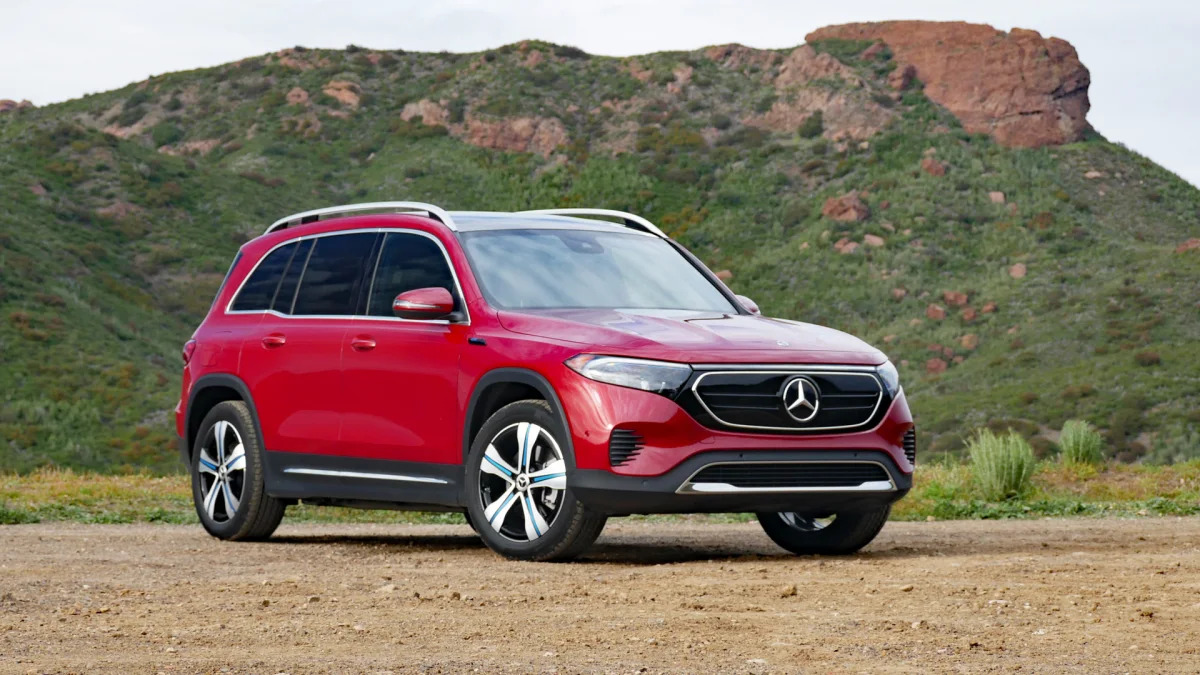
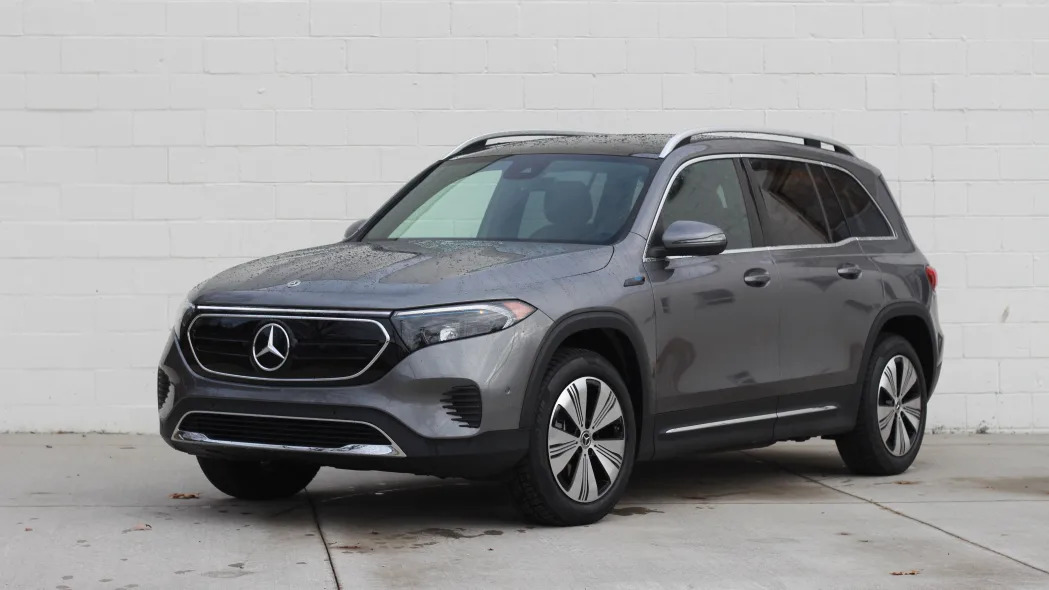








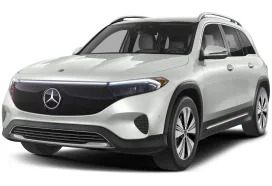
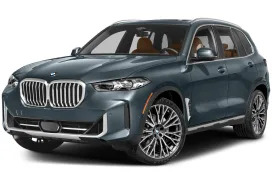
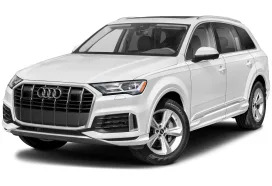

Sign in to post
Please sign in to leave a comment.
Continue